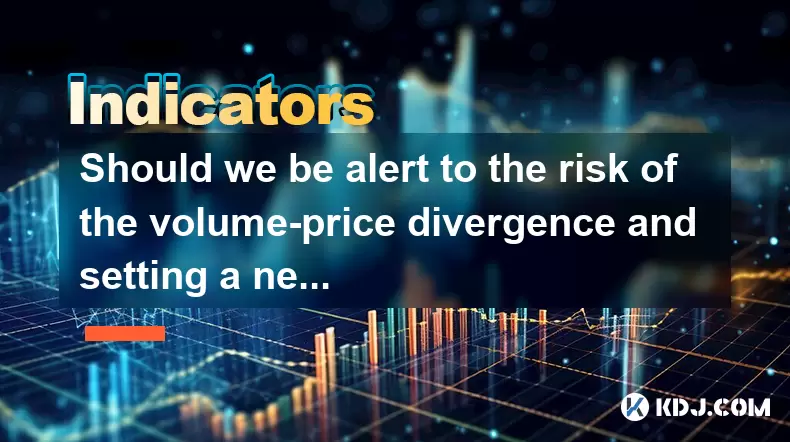-
 Bitcoin
Bitcoin $108,092.5658
-0.99% -
 Ethereum
Ethereum $2,546.4530
-1.12% -
 Tether USDt
Tether USDt $1.0000
0.01% -
 XRP
XRP $2.2676
0.12% -
 BNB
BNB $659.1616
-0.30% -
 Solana
Solana $148.8297
-1.97% -
 USDC
USDC $1.0000
0.02% -
 TRON
TRON $0.2874
-0.30% -
 Dogecoin
Dogecoin $0.1676
-3.64% -
 Cardano
Cardano $0.5765
-1.73% -
 Hyperliquid
Hyperliquid $37.2069
-6.18% -
 Bitcoin Cash
Bitcoin Cash $497.9918
-0.10% -
 Sui
Sui $2.8427
-2.26% -
 Chainlink
Chainlink $13.2689
-2.06% -
 UNUS SED LEO
UNUS SED LEO $9.0541
0.15% -
 Stellar
Stellar $0.2487
-0.92% -
 Avalanche
Avalanche $17.7710
-3.09% -
 Shiba Inu
Shiba Inu $0.0...01167
-1.28% -
 Toncoin
Toncoin $2.7488
-2.80% -
 Hedera
Hedera $0.1559
-2.28% -
 Litecoin
Litecoin $85.8945
-2.48% -
 Monero
Monero $316.0985
-2.09% -
 Dai
Dai $1.0001
0.02% -
 Polkadot
Polkadot $3.3481
-1.83% -
 Ethena USDe
Ethena USDe $1.0000
0.00% -
 Bitget Token
Bitget Token $4.2910
-3.04% -
 Uniswap
Uniswap $7.4131
-0.09% -
 Aave
Aave $280.9266
-2.67% -
 Pepe
Pepe $0.0...09816
-3.18% -
 Pi
Pi $0.4557
-2.29%
Should we be alert to the risk of the volume-price divergence and setting a new high?
Jun 30, 2025 at 07:35 am

Understanding Volume-Price Divergence in Cryptocurrency Markets
In cryptocurrency trading, volume-price divergence refers to a situation where the price of an asset moves in one direction while its trading volume moves in the opposite direction. This phenomenon is often viewed as a potential warning sign by experienced traders. For instance, if the price of Bitcoin reaches a new high but the trading volume decreases significantly during that move, it may suggest that the rally lacks strong market participation or conviction.
This kind of divergence can be particularly relevant in the crypto market due to its highly speculative nature and frequent pump-and-dump behaviors. Traders who ignore this signal may find themselves caught in false breakouts or sudden reversals. Therefore, understanding how volume correlates with price action is essential for risk management and decision-making.
Volume-price divergence is not inherently bearish or bullish — it's the context surrounding it that matters most.
Identifying Volume-Price Divergence on Crypto Charts
To spot a potential volume-price divergence, traders need to closely examine both the price chart and the volume histogram typically displayed at the bottom of candlestick charts. Here are key steps to identify such divergence:
- Look for a clear upward trend in price accompanied by a downward trend in volume.
- Check whether recent highs are being made on lower volume compared to previous rallies.
- Use technical indicators like On-Balance Volume (OBV) or Volume Weighted Average Price (VWAP) to confirm the divergence.
For example, if Ethereum hits a new all-time high but the OBV line fails to surpass its previous peak, this could indicate weakening buying pressure despite rising prices. Such signals should prompt traders to reassess their positions or tighten stop-loss levels.
The Significance of New Highs Without Strong Volume Support
When a cryptocurrency sets a new high without corresponding increases in trading volume, it raises concerns about the sustainability of the uptrend. New highs without volume support often reflect short-term speculation rather than long-term accumulation. In many cases, these rallies are driven by algorithmic trading bots, social media hype, or whale manipulation instead of organic demand.
Traders should be cautious when entering positions based solely on momentum in such conditions. A lack of broad-based volume suggests that institutional or retail investors aren't fully behind the price movement. As a result, the market may quickly reverse once early buyers start taking profits.
It’s also important to compare current volume levels with historical averages. If the new high occurs on volume that’s significantly below average, it reinforces the idea that the move might be fragile.
Risks Associated with Ignoring Volume Signals
Failing to recognize volume anomalies can lead to significant losses, especially in volatile markets like cryptocurrencies. Some of the risks include:
- False breakouts: Prices breaking resistance levels without volume confirmation often fail shortly after.
- Sudden reversals: Lack of volume backing a rally can lead to rapid selloffs, catching traders off guard.
- Increased slippage: Low volume during sharp price movements can result in poor execution for large orders.
These risks are amplified in altcoin markets where liquidity is thinner compared to major coins like Bitcoin and Ethereum. Traders who rely only on price action without considering volume dynamics may expose themselves to unnecessary volatility and emotional trading decisions.
How to Respond to Volume-Price Divergence
When detecting a potential volume-price divergence, traders have several options depending on their strategy and risk tolerance:
- Reduce exposure: Partially closing long positions can help lock in gains and reduce downside risk.
- Tighten stop-loss orders: Adjusting stop-loss levels closer to the current price can limit potential losses.
- Avoid chasing breakouts: Waiting for volume confirmation before entering new trades can prevent premature entries.
- Monitor order book depth: Checking bid-ask spreads and order book imbalances can provide additional insights into real market strength.
Using tools like volume profile and time and sales data can further enhance the accuracy of divergence analysis. These tools help visualize where the majority of trading activity has occurred and whether new price levels are supported by substantial volume.
Frequently Asked Questions
Q: Can volume-price divergence occur in both uptrends and downtrends?
Yes, divergence can appear in both directions. In a downtrend, falling prices with decreasing volume may suggest weakening selling pressure, potentially signaling a reversal.
Q: Is volume more important than price in crypto trading?
While both metrics are crucial, volume provides context to price movements. Price alone can be misleading, especially during low-volume periods or manipulative spikes.
Q: How reliable is volume analysis across different exchanges?
Volume reliability varies between exchanges. It’s advisable to use platforms with transparent and verified volume data, as some exchanges inflate or manipulate reported volumes.
Q: What tools can I use to analyze volume-price divergence effectively?
Popular tools include On-Balance Volume (OBV), Chaikin Money Flow (CMF), and Volume Profile. Many charting platforms like TradingView offer built-in indicators for divergence detection.
Clause de non-responsabilité:info@kdj.com
Les informations fournies ne constituent pas des conseils commerciaux. kdj.com n’assume aucune responsabilité pour les investissements effectués sur la base des informations fournies dans cet article. Les crypto-monnaies sont très volatiles et il est fortement recommandé d’investir avec prudence après une recherche approfondie!
Si vous pensez que le contenu utilisé sur ce site Web porte atteinte à vos droits d’auteur, veuillez nous contacter immédiatement (info@kdj.com) et nous le supprimerons dans les plus brefs délais.
-
 ICNT Échangez maintenant
ICNT Échangez maintenant$0.3182
30.31%
-
 M Échangez maintenant
M Échangez maintenant$0.2011
23.43%
-
 SOLO Échangez maintenant
SOLO Échangez maintenant$0.3788
17.55%
-
 HSK Échangez maintenant
HSK Échangez maintenant$0.7010
17.49%
-
 SHX Échangez maintenant
SHX Échangez maintenant$0.0116
15.42%
-
 COREUM Échangez maintenant
COREUM Échangez maintenant$0.1392
8.59%
- Bitcoin Solaris Market Launch: A New Dawn or Just Another Altcoin?
- 2025-07-08 20:30:12
- Bitcoin, Memecoin Mania, and the All-Time High Hunt: What's Next?
- 2025-07-08 20:30:12
- Byrq Coin: Scam or Savior? A Deep Dive Review
- 2025-07-08 20:50:12
- Shiba Inu's Burn Rate Bonanza: Can Crypto Burns Ignite a Price Rally?
- 2025-07-08 20:50:12
- Telekom, injectif et validateurs: une plongée profonde dans la sécurité et la croissance du réseau
- 2025-07-08 21:10:12
- ROM: Golden Age - un demi-million de pré-registrations et un butin crypto!
- 2025-07-08 21:15:12
Connaissances connexes

How to trade Dogecoin based on funding rates and open interest
Jul 07,2025 at 02:49am
<h3>Understanding Funding Rates in Dogecoin Trading</h3><p>Funding rates are periodic payments made to either long or short traders ...

What is the 'God Mode' indicator for Dogecoin
Jul 07,2025 at 04:42pm
<h3>Understanding the 'God Mode' Indicator</h3><p>The 'God Mode' indicator is a term that has emerged within cryptocurrency trading ...

Using Gann Fans on the Dogecoin price chart
Jul 07,2025 at 09:43pm
<h3>Understanding Gann Fans and Their Relevance in Cryptocurrency Trading</h3><p>Gann Fans are a technical analysis tool developed b...

How to spot manipulation on the Dogecoin chart
Jul 06,2025 at 12:35pm
<h3>Understanding the Basics of Chart Manipulation</h3><p>Chart manipulation in the cryptocurrency space, particularly with Dogecoin...

Dogecoin market structure break explained
Jul 07,2025 at 02:51am
<h3>Understanding the Dogecoin Market Structure</h3><p>Dogecoin, initially created as a meme-based cryptocurrency, has evolved into ...

How to backtest a Dogecoin moving average strategy
Jul 08,2025 at 04:50am
<h3>What is a Moving Average Strategy in Cryptocurrency Trading?</h3><p>A moving average strategy is one of the most commonly used t...

How to trade Dogecoin based on funding rates and open interest
Jul 07,2025 at 02:49am
<h3>Understanding Funding Rates in Dogecoin Trading</h3><p>Funding rates are periodic payments made to either long or short traders ...

What is the 'God Mode' indicator for Dogecoin
Jul 07,2025 at 04:42pm
<h3>Understanding the 'God Mode' Indicator</h3><p>The 'God Mode' indicator is a term that has emerged within cryptocurrency trading ...

Using Gann Fans on the Dogecoin price chart
Jul 07,2025 at 09:43pm
<h3>Understanding Gann Fans and Their Relevance in Cryptocurrency Trading</h3><p>Gann Fans are a technical analysis tool developed b...

How to spot manipulation on the Dogecoin chart
Jul 06,2025 at 12:35pm
<h3>Understanding the Basics of Chart Manipulation</h3><p>Chart manipulation in the cryptocurrency space, particularly with Dogecoin...

Dogecoin market structure break explained
Jul 07,2025 at 02:51am
<h3>Understanding the Dogecoin Market Structure</h3><p>Dogecoin, initially created as a meme-based cryptocurrency, has evolved into ...

How to backtest a Dogecoin moving average strategy
Jul 08,2025 at 04:50am
<h3>What is a Moving Average Strategy in Cryptocurrency Trading?</h3><p>A moving average strategy is one of the most commonly used t...
Voir tous les articles

























































































